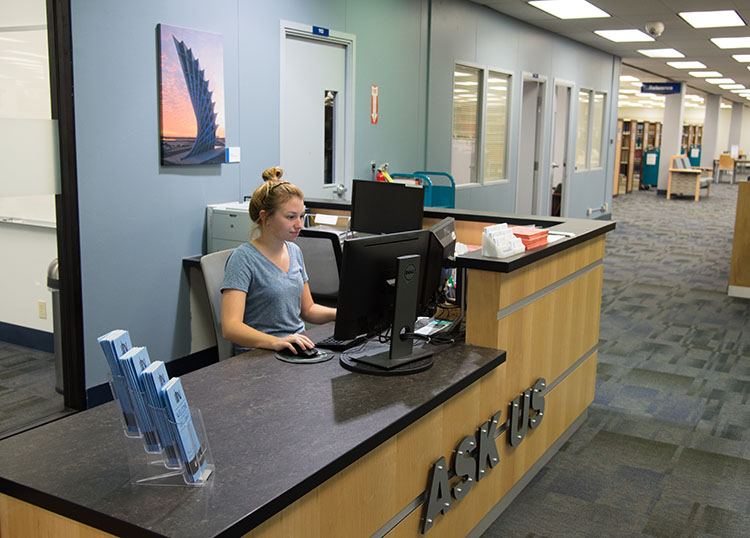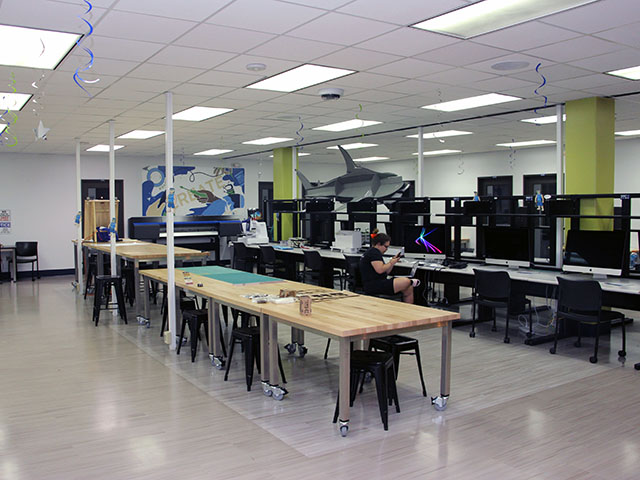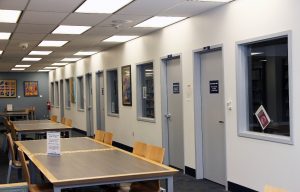I would like to take this opportunity to welcome everyone to the 2019/20 academic year! The University and the Library have been up to great things, and the excitement is contagious. Bell Library is coming off a year of great change, which included the following projects, among other work.

- Bell Library opened the I-Create makerspace lab, which we will continue to develop and grow.
- Be sure to keep an eye out for workshop announcements and opportunities to be involved in collaborative innovative projects.
- We welcomed IT Help Services into the Library, where they are more centrally located and more accessible to those seeking IT assistance.
- And to make it even easier to get both research assistance and IT assistance, we will be expanding the “Ask Us” service desk to better accommodate walk-up help.
- In operations news, we migrated our library management system to a new library services platform. While you might not see much change on the outside, it provides a uniform experience between our discovery service and our catalog making it easier to search both print and online library materials in one place. It will also allow for more efficient operations, including data analysis for strategic decisions.
- Our go-live date for this undertaking was July 2, and we will be cleaning up data and continuing to evaluate workflows and streamline operations in the upcoming year.
- We worked to review and evaluate the content of over 100 secondary web pages getting them ready to move to a new website template that will be more engaging and user-friendly. With the template developed, migration work is expected to begin before September 1.
- We hired a new Director of Special Collections and Archives and work continues on reprocessing collections to new standards that support digitization making it easier to access archival material online. These efforts will continue to make our unique collections more discoverable and available to researchers, both at TAMU-CC and around the world.
- We began offering a new service of minting Digital Object Identifiers (DOIs) through DataCite to assist researchers with obtaining persistent interoperable identifiers for datasets and other research work.
- Originally this was to fill a specific need of the Harte Research Institute and has since expanded to include a general TAMU-CC data center.
- We championed for a Quality Enhancement Plan (QEP) on Information and Digital Literacy and worked to see that plan come to fruition. The QEP will continue to be developed over the upcoming fall semester and will be ready for the SACSCOC onsite visit in February, so be sure to keep an eye for more details soon.
Above is just the tip of the iceberg and is not by any means exhaustive. So how do we top the year of 2018/19? We concentrate on honing those initiatives and ensuring strong footing going forward. The 2019/20 academic year will be a year of consolidation for us. Change is inevitable, and in my opinion wonderful, but we hope to slow the pace a bit this year. We don’t want to be so busy chasing the next shiny bell, that the bells we just put in place are forgotten and become tarnished.
Our 2019/20 efforts will be focused on the following.

- Continuing to grow and promote the I-Create lab.
- Performing data clean-up and workflow assessment following the library system migration.
- Reprocessing prioritized collections within Special Collections and Archives, including the Kilgore Papers, the Galvan Papers, and the Merriman papers, among others.
- Working with the QEP Development Committee to finish the QEP proposal and to prepare the campus for QEP questions during the SACSCOC onsite visit in February.
- Working with campus partners to promote Open Educational Resources (OER) and to establish a stronger foothold for textbook affordability at TAMU-CC. In addition, we hope to work with campus partners to promote a culture of open access when and where appropriate, including such possibilities as an open publishing policy and an open publishing fund.


